Have you seen those strange Wish adverts that pop up all over Facebook? Ever wondered what that’s all about? Here Futzy and the Bitch (aka Ariel and Chris) explain it all. With pictures.
Tag Archives: the
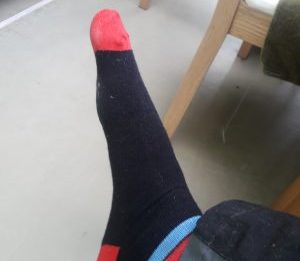
In the Queue
In the seventies we used to be sniffy about queues. They were an Eastern Block thing. Behind the iron curtain you’d queue to buy anything; everything had it’s own queue. A successful purchase could lift the spirits for the week. Pavlov has got wodka; he managed to swap his wife for two bottles, and his little Micha is queuing in Gdansk – for what, she doesn’t know – but we’re bound to need it by the time she arrives at the front. Oh, how we laughed at the foolish communists. Why queue for a Trabant?
Who’s laughing now eh? We got some lovely garden furniture and slug pellets. We were queuing for filler and paint, but you’ve got to take what’s available. It isn’t just shopping either: we now queue virtually as well and, frequently, without a clear objective in mind. Yes, I now understand online means you’re in the queue. It’s weird: I keep finding myself in the waiting mode – buying a ticket, logging in and then waiting in zoom. Time has changed. Anyone would have expected lockdown to make it less relevant. I mean, people are frequently working from home – they can do it in their pyjamas and, probably, whenever they like, but wifi has even inserted a queue there – because everytime you wait while the screen freezes or buffers, you are essentially back in a queue. My youngest gets up every Tuesday at dawn to get a place on the supermarket ‘merry go round’. Whatever we are, wherever we go, we are infront of someone and behind someone, and we don’t really know what we’ll be getting.
You can see it way off. The outriders on the hill down to the junction, along to the gates to the retail car park, and then the extended spiral that allows for social distancing, and on. But do take a trolley before you start, oh, and a novel, script, bottle of water, sandwiches – and always a sense of humour. Oh, you may as well dispense with the list, or at least write it whilst you wait, because, by the time you get there, you are going to be a different person, and stuff you thought you were buying may not be what you leave with.
Happy queuing!

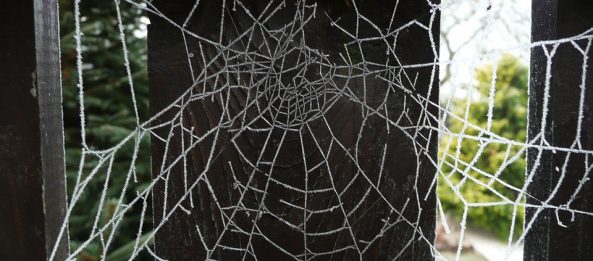
Nature in the Raw
In the world of nature, battles are fought daily that exceed in ferocity even those of our bloodiest, be it Waterloo, Stalingrad or Valley Forge. The natural contests differ from the human in that the former are conducted as a matter of survival and predatory food, whilst humans too often have mutually slaughtered for less justifiable reasons.
If you had been present in a garden shed in the West of Ireland, on a day when the sun shone brightly through the small rooflight, you would have witnessed a memorable spectacle being enacted: a fight to the death between a wasp and a spider. The spider is an astute tactician who knows well the importance of selecting the battleground best suited to neutralizing the wasp’s superiority in weaponry and manoeuvrability, to level the playing field. He must at the outset disable at least one of the wasp’s advantages in weaponry.
The battleground was an unusually strong web, right up in a shaft of strong sunshine. Of the forest of webs in this virtually untouched habitat, this fortification was of the strongest. A foraging wasp, minding his own business and failing to keep a sharp lookout, reported his blundering intrusion by a frantic acceleration of his buzzing wings. This (which is well known to a spider) is designed to enmesh the intruder deeper and deeper the more he struggles.
You would observe the entire web violently rocking, such was the energy of the wasp. You would find the spider, and he was a big one, waiting expectantly at the extremity of one web strand, from which position he could sally forth to any point of the web in attack. If you were familiar with spider strategy and language, you would understand that his tactics were to tire out the wasp until the point when he could rush in and deliver the paralysing bite.
It was a long wait. At intervals, the spider would make a rush towards the wasp, a manoeuvre that alarmed the wasp into a renewed frenzy of buzzing. Time and again he advanced and time and again retreated, as the fellow had obviously learned the wisdom of discretion being the better part of valour. As the buzzing got fainter and lower on the audio scale, you might predict how this was going to end. If you were a betting man, you’d be laying odds on the spider.
If you stayed until the denouement, you would have witnessed the countless rushes and retreats and the wasp’s failing strength, but nothing in nature is quite predictable, and, as the spider poised for the final coup de gras, the buzzing re-awoke to a sudden crescendo and the wasp broke free, mocking his erstwhile adversary all the while. The spider was left crouching at the edge of his torn flytrap, and one can imagine his chagrin, in spider language – Damn! If the wasp was trailing a metre-long string of web – for all the world like one of those advertising streamers towed by light aircraft – it was a small burden to carry for his triumphant escape. And if he was trumpeting his triumph over a wily enemy, who are we to criticise him?
Tony Tynan
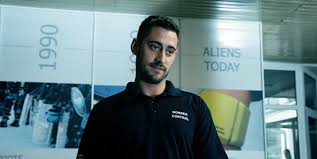
New Century – New Aliens
Watching E4’s new 6-part drama The Aliens, I was strongly reminded of the 1989 American TV series Alien Nation, based on the 1988 film of the same name. Initially, I was struck by the similarities between the two programmes: in each an alien ship crash lands on earth, spilling it’s refugees, who then commence a new life on our planet. But, if art imitates life, then the differences between the two shows may be a mirror of how society’s views and attitudes have altered in two plus decades.
Aliens in SF are often used to represent the other: the foreigner, the outsider, the ‘not one of us.’ In both The Aliens and Alien Nation, the offworlders are literally refugees and immigrants so the metaphor is clearly drawn. So how do the respective shows reflect the social attitudes of their time and place of creation?
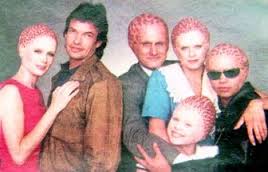 In 1989, the US was still seen as the land of opportunity – “Give me your tired, your poor, your huddled masses yearning to breathe free,” as the 19th Century poet Emma Lazarus famously said. In Alien Nation, the Tenctonese, or “newcomers” as they were called, were being gradually integrated into human society, although not without being on the receiving end of a fair amount of racism – they are referred to as ‘slags;’ given silly human names such as Albert Einstein; and often have the most menial of jobs. However, they live in human neighbourhoods; mix in human society; and work their way up the employment ladder – both the film and TV series feature a human/alien police partnership, for instance. The aliens are portrayed as victims rather than threats: tellingly, the ship that crashed was a slaver.
In 1989, the US was still seen as the land of opportunity – “Give me your tired, your poor, your huddled masses yearning to breathe free,” as the 19th Century poet Emma Lazarus famously said. In Alien Nation, the Tenctonese, or “newcomers” as they were called, were being gradually integrated into human society, although not without being on the receiving end of a fair amount of racism – they are referred to as ‘slags;’ given silly human names such as Albert Einstein; and often have the most menial of jobs. However, they live in human neighbourhoods; mix in human society; and work their way up the employment ladder – both the film and TV series feature a human/alien police partnership, for instance. The aliens are portrayed as victims rather than threats: tellingly, the ship that crashed was a slaver.
In contrast, E4’s spaceship was said to be a prison ship (according to the humans – the aliens have lost their memory of life before Earth) and the refugees are confined behind a wall, only allowed into the human side to work for a limited period each day, returning to Troy (their place of abode) before their curfew at 7pm each evening. They are portrayed as an evil influence, due to the fact that their hair, when smoked, has a narcotic effect on humans, and they take advantage of this by working as drug dealers and organising into criminal gangs.
Bearing in mind the media hysteria over immigration in Britain in the run up to the 2015 general election, with politicians of every stripe threatening to clamp down on it, it is obvious that The Aliens plays right into these fears and controversies. Although it suggests towards the end of the series that keeping them behind the wall is not a good idea, there is no indication that anything is going to change. Almost all of the alien characters are shown to be violent, no matter what side they are on.
Interestingly, in terms of actually living there, present day Britain is probably a better place for ethnic minorities than late eighties/early nineties LA, as evidenced, for instance, by the police beating of Rodney King and the subsequent riots; but in terms of official, media and public attitudes to immigration matters have certainly deteriorated badly in the past 25 years and The Aliens accurately reflects this zeitgeist.
Although both series concern refugees, Alien Nation overall seems to be more about racism in general, whereas The Aliens appears to relate more to immigration (the aliens don’t actually look any different than humans, for example). However, the biggest difference, to my mind, is that of perspective: Alien Nation was optimistic and full of millennial hope that problems may be overcome; The Aliens offers nothing but despair for the future, which sadly reflects the feelings of many in Britain today at the dawning of the new century.
Well Worth a Visit
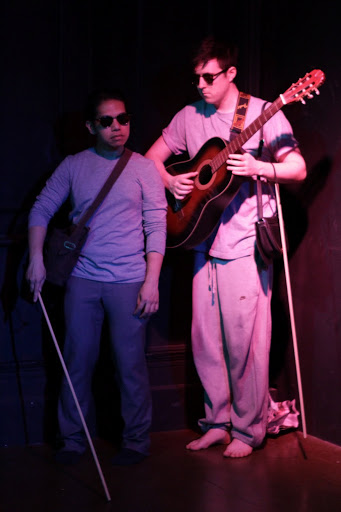 Theatre Collection presents The Visit at The Lord Stanley, Camden
Theatre Collection presents The Visit at The Lord Stanley, Camden
The Visit opens with optimism: the citizens of Gullen are looking forward to the arrival of one of their own and hoping she will spread some of her good fortune around her old town. But, immediately upon her arrival, it becomes apparent that Claire Zachanassian, the richest woman in the world, is used to always getting what she wants – and what she wants now is murder.
Nicholas Humphrey’s thought-provoking direction builds a sense of menace right from the outset, using sound, movement and, in particular, repetition to contribute to the aura of unavoidable impending doom. The characters of the blind eunuchs (Christopher Dowling and Carlos Mapano) add to this considerably, as does the slightly unusual use of physical theatre, when the actors’ bodies transform but their faces remain very much in character.
Madlena Nedeva, as Claire, gave a credible portrayal of wealth and world-weariness, and Danny Reyntiens, as her old lover Ill, was consistently watchable throughout, especially approaching the end as he became resigned to his fate. Fiona Watson’s Teacher was particularly sympathetically played, and I would love to have seen more of Erin Siobhan, whose various parts were short but significant. For my money, the best female performance came from Penelope Day, who maintained a marvellous contrast between the Police Officer and Matilda Ill.
Although there was comedy in the play from the outset (“my father built those public toilets”), particularly in Clive Alexander’s quirky portrayal of husbands 7, 8 and 9, it was mostly overshadowed by the growing sense of claustrophobia. The main exception was the scene with the reporters in Act II, where Ian MacNaughton excelled. In contrast to his serious and slightly macabre portrayal of the ex-judge in Act I, Ian’s reporter was fun and lively in a game-show host way, using vocal range, movement and a brilliantly expressive face to give us the funniest scene in the play – just moments before its sinister denouement.
Overall, this is a very good production. The tension builds exponentially and ends in a dramatic climax. Nothing is overdone or overstated, and the audience leaves with plenty to talk about! Try and catch one of the last three performances if you possibly can.
The Visit is at The Lord Stanley, 51 Camden Park Road, NW1 9BH on 14, 20 and 21 May at 7.30pm. For tickets visit www.theatrecollection.net or call 07966 597190.
Mary Tynan

The Crime of the Century
Whenever Dylan Mohan Gray, the director of Fire in the Blood, is asked what the film is about, these are the words he uses: “the crime of the century.” This impressive and highly-engrossing film tells the story of big pharma, patent law, and how profit is placed before human life.
The film tells the story of the struggle to enable access to medicine for AIDS victims in Sub-Saharan Africa, who were still dying in their millions for many years after antiretroviral drugs had transformed HIV into a treatable condition in the West. 10 million or more people died preventable deaths as a direct result of Western pharmaceutical companies and governments blocking access to affordable, available generic medicine.
The documentary puts a human face on the issue, with many memorable contributions both from well-known names and from ordinary Africans affected by the virus. HIV-positive Human rights activist Zackie Achmat refused to take antiretroviral treatment, despite rapidly failing health, until the South African government publicly funded the medicines for all. Yusuf Hamied, the chairman of Indian generic drug company CIPLA, turned the tide when he offered to supply the AIDS drugs for less than $1 a day to developing countries, and to share the technological knowledge necessary for production. Lisa Kalolo, a South-African child faced a bleak future, but thanks to ART she is now attending school and living a normal life.
However, although the AIDS situation appears to be solved, we are warned that those currently taking “first-line” ARVs will, in the future, have to change to more complex ARVs which are not, and are unlikely to be, available in generic form. Director Dylan Mohan Gray also points out that AIDS in the developing world is only part of the scandal of big pharma and patent regulation: almost 50% of Americans are unable to afford their prescriptions, and approximately 33% of deaths worldwide each year are caused by treatable and preventable diseases. This situation looks set to disimprove significantly as American and European trade measures continue to cut off the supply of affordable drugs from India.
This is an important film about a significant matter which is of relevance to anyone. The implications for the world from this issue are wide ranging, and it almost feels as if Fire in the Blood should just be the first of a series of documentaries that explores the future of access to affordable medicine. This affects us all. Please watch this film.
For more information, or to find a screening near you, visit www.fireintheblood.com.
Mary Tynan

